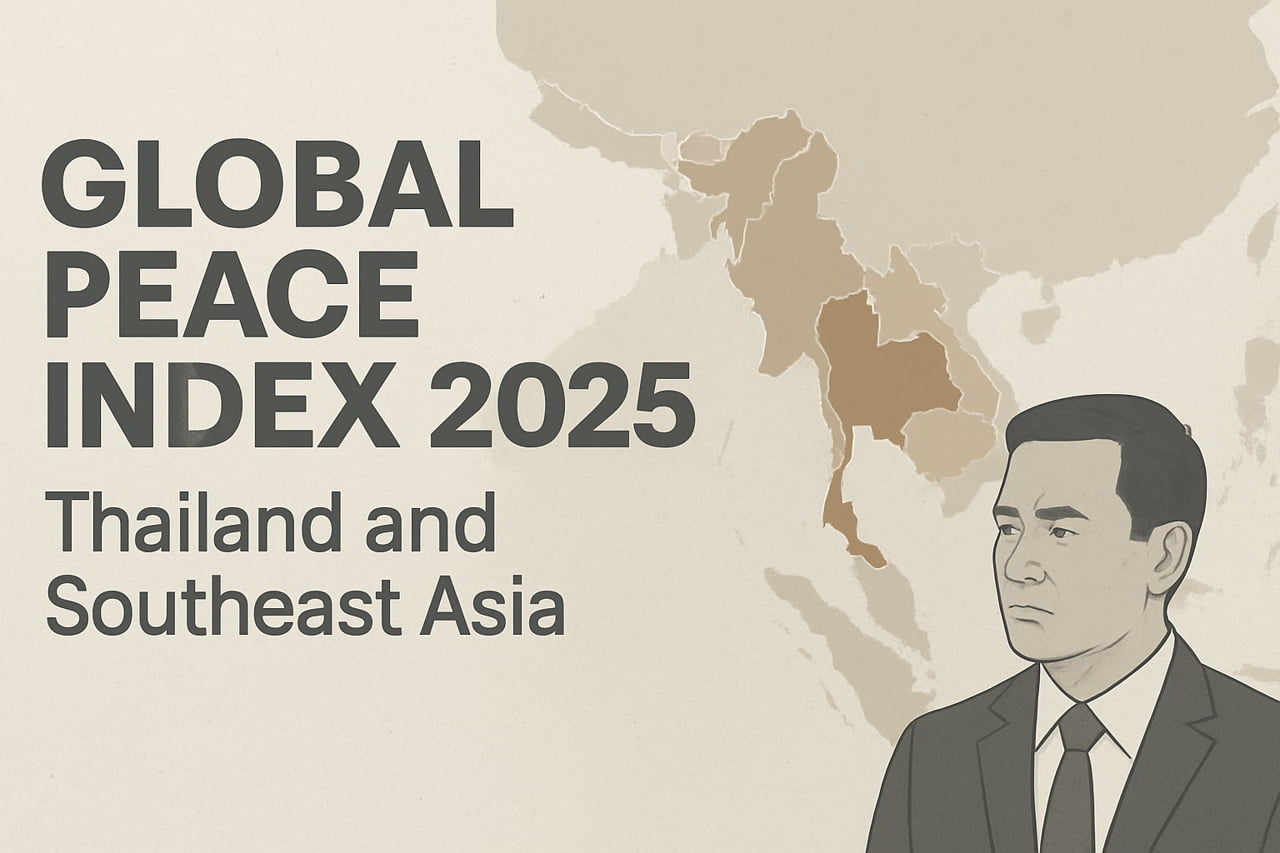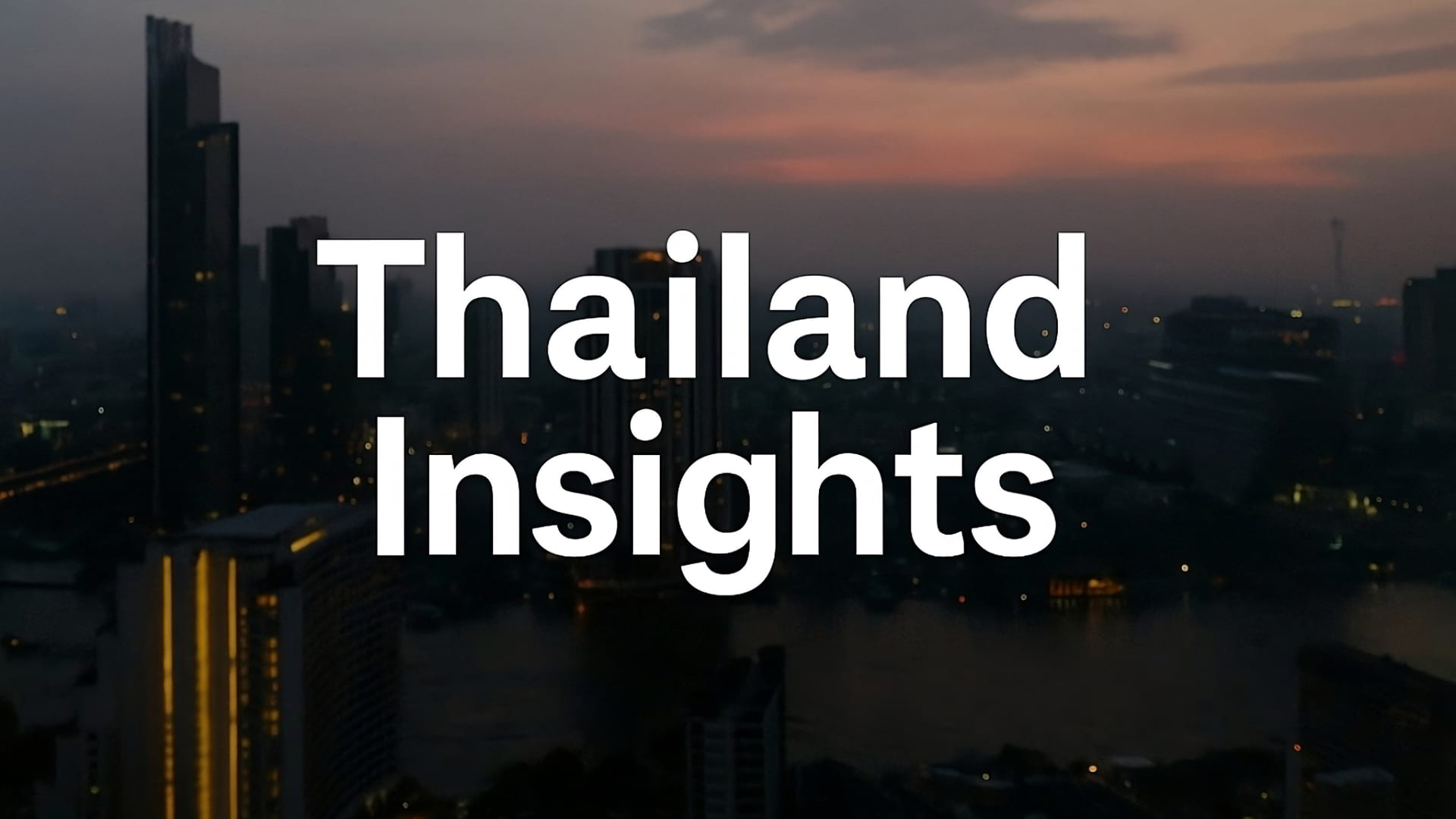
Global Peace Index 2025: Thailand and Southeast Asia in the global ranking
The 2025 Global Peace Index by the Institute for Economics & Peace measures global peace with 23 indicators. This article examines Thailand, its Southeast Asian neighbors, and compares them with United Kingdom, Australia and United States.
The Global Peace Index and Its Methodology
The Global Peace Index (GPI) is published annually by the Institute for Economics & Peace (IEP), an independent, non-profit research center headquartered in Sydney with offices in New York, Brussels, The Hague, Mexico, and Nairobi.
The 2025 edition evaluates 163 countries, covering almost the entire world population. The methodology combines 23 qualitative and quantitative indicators divided into three main domains:
- Societal safety and security, including crime, political instability, and internal tensions;
- Ongoing domestic and international conflict, measuring military involvement and levels of violence;
- Militarization, assessing defense spending, troop levels, and arms exports.
Together, these criteria produce a peace score and a global rank that highlight both short- and long-term trends.
Thailand and Southeast Asia in the 2025 Ranking
Southeast Asia shows mixed results in the 2025 report. Thailand ranks 86th worldwide, with its score deteriorating due to persistent internal tensions and a strong role of the military in political life.
Laos is ranked 47th, but its score declined because of political restrictions and limited openness. Cambodia, in 87th place, records a sharper deterioration linked to power concentration and fragile institutions.
Vietnam, at 38th, a good score compared to many countries in the region. Malaysia, placed 13th globally, remains one of the region’s most stable countries, although its score slipped slightly. At the bottom of the regional list, Myanmar occupies the 153rd place, reflecting the ongoing civil war since the 2021 coup.
Overall, Southeast Asia shows a regional decline, emphasizing the weight of political crises, border tensions, and authoritarian regimes on peace levels.
Global Context: Key Countries
For reference, the 2025 Global Peace Index places:
- United Kingdom: 37th
- Australia: 27th
- United States: 131st
These positions highlight different national dynamics. The United Kingdom maintains a solid mid-range ranking, reflecting relatively high levels of societal security but also ongoing challenges linked to political polarization and international commitments. Australia performs better, securing 27th place, thanks to strong institutions, low levels of internal conflict, and limited militarization. In contrast, the United States sits much lower in the table at 131st. Its position is explained by a combination of factors: persistent domestic violence, high incarceration rates, and a significant military footprint both at home and abroad.
The comparison underlines how structural issues such as governance, social cohesion, and militarization directly influence the peace index ranking, making the U.S. a global outlier among developed nations.
France, Belgium, and Spain in the Global Index
For comparison, the report places several European countries:
- France is ranked 74th, showing some long-term improvement but facing challenges related to military involvement abroad and domestic polarization.
- Belgium, at 16th, improved its position and demonstrates relative institutional stability.
- Spain, ranked 25th, holds steady compared to last year with no significant change.
These results underline the relative strength of Western Europe as the most peaceful region, while highlighting differences between individual states.
Regional and Global Reading
The 2025 Global Peace Index shows that peace remains fragile and unevenly distributed. Southeast Asia illustrates this tension with diverging trends: Malaysia and Vietnam manage to preserve stability, while Thailand, Laos, and Cambodia register setbacks. Myanmar’s crisis continues to drag down the regional average.
The report also highlights the crucial role of militarization, governance, and internal conflicts in shaping peace. These challenges are central both in Southeast Asia and in Europe.



